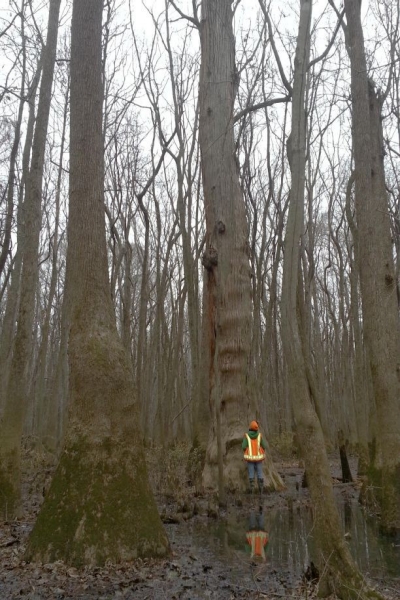Best Practices in Voluntary Wetlands Protection

When engaging in voluntary wetlands protection, there are a number of important considerations that are deemed best practice. These include:
Project goals and objectives. It is important to establish clear goals and objectives for your wetlands protection project. The outcomes you are looking to achieve can dictate site selection, the types of plant species you utilize, monitoring needs, and various other planning and design factors.
Site evaluation. The condition of the site you select can determine the success of your wetlands protection project. Several factors, which are briefly described below, should be considered as part of this site evaluation.
Hydrology source. Wetlands typically have 1-2 major water sources, such as surface waters, precipitation or groundwater discharge, that drive the hydrologic functions of the wetland. The hydrology source plays a critical role in determining a wetland’s hydroperiod, or its seasonal pattern of water level, taking into consideration inflow, outflow, and storage capacity. Wetland design should align well with its hydrology sources.
Soils. The characteristics of a site’s soil can determine its ability to perform wetland functions and its ability to support specific plant types. Therefore, it becomes critically important to assess and understand the hydrodynamics of a site’s soil. Characteristics of interest may include horizonation, organic matter content, texture, permeability, drainage, color, compaction, pH, and residual herbicides or pesticides.
Ecological communities and native plant material. Developing an inventory of plant species on the site can help in developing a comprehensive protection plan. Native plant species on the site are likely to thrive and existing plants can be good indicators of what growing conditions may be at the site. Any exotic species identified should be removed or contained prior to planting new plants. Similar efforts should be taken to understand existing wildlife.
Landscape position
- Headwater seep
- Low slope
- Small floodplain
- Large floodplain
- No inlet/outlet
- Inlet/outlet
Topography. The topography of a site can influence wetland protection design. Sites with steeper slopes may be more likely to encounter soil erosion issues. Low areas are more likely to be waterlogged during certain portions of the year. Microelevation also may play a role in a plant’s ability to thrive.
Climate. The climate of a site can influence plant selection and the success of the wetland. Factors to consider include but are not limited to temperature, precipitation, shade/availability of sunlight, and number of frost-free days.
In addition to these general considerations, wetlands protection best practices vary by geographic location. TDEC has developed a GIS resource which maps wetland ecological system classes across the state, relating them to the specific ecoregions that they are found in. This resource provides users with access to examples of wetlands projects in each ecoregion, as well as an overview of tips wetlands protection in each respective area.
This Page Last Updated: October 20, 2021 at 4:34 PM